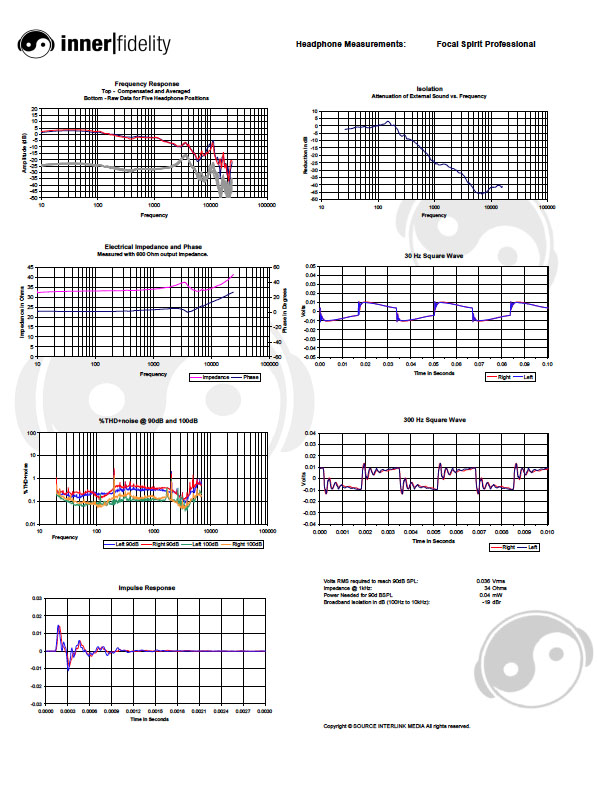| Columns Retired Columns & Blogs |
Two in the Strike Zone: Focal Spirit Professional and Spirit Classic Measurements
Spirit Professional Measurements


Click on graphs image to download .pdf for closer inspection.
Spirit Classic Measurements
Click on graphs image to download .pdf for closer inspection.
Measurements of the Focal SPirit Classic and Professional are very close, so I'll comment on both sets of measurements simultaneously and highlight differences as needed.
Raw measurements of the headphones show little difference in response with positional changes on the head. These cans should reliable provide a good seal.
Compensated frequency response of the Spirit Classic shows an extraordinarily artifact-free plot with a warm tilt to 3kHz. Thereafter, we see a dip at 4kHz and a peak at 10kHz—both of which are modest in size and fairly typical for headphones of this type. Energy level above 10kHz is about right. The Spirit Professional is quite similar, but does show a moderate level increase between 400Hz and 2kHz that gives these headphones a more forward sound compared to the more laid-back character of the Classics.
30Hz square wave shape is excellent. Remember the way these look, it's probably just about right. 300Hz square wave and impulse response on both headphones show a moderate amount of ringing. This looks to me like narrow band ringing from the peak at 3kHz. I tried to identify this in listening tests but was unable. In one of the Head-Fi thread someone mentioned a slightly metallic sound to these cans that might have related to this feature, but I wasn't able to hear it. The only thing I heard that might be related to this feature is slightly worse high frequency resolution than the NAD VISO HP50, which has excellent transient response. At any rate, this artifact doesn't seem to get in the way of good reproduction as much as one might think from the measured performance. The slightly higher 300Hz square wave leading edge on the Professional is probably an indication of its slightly more forward presence region response.
THD+noise response of both headphones is truly excellent. Lack of rising bass distortion shows that the seal of these cans works very well. 100dBspl plot being lower than the 90dBspl plot over the entire frequency range indicates very good power handling capabilities. These cans should play loud very cleanly. THD_+noise plots here are among the best I've seen.
Impedance and phase plots are very clean indicating good control of the acoustics around the driver. Both headphones are nominally 34 Ohms.
Isolation on both headphones is very good with broadband attenuation of 19dB. With about 0.04Vrms needed to achieve 90dBspl in the headphones these headphone will achieve solid listening levels from most portable devices.
- Log in or register to post comments




































